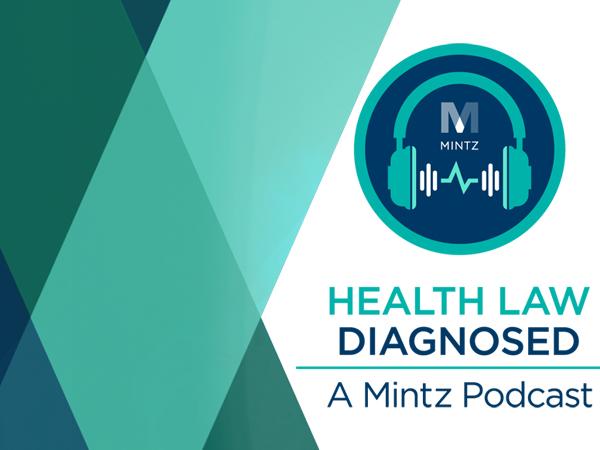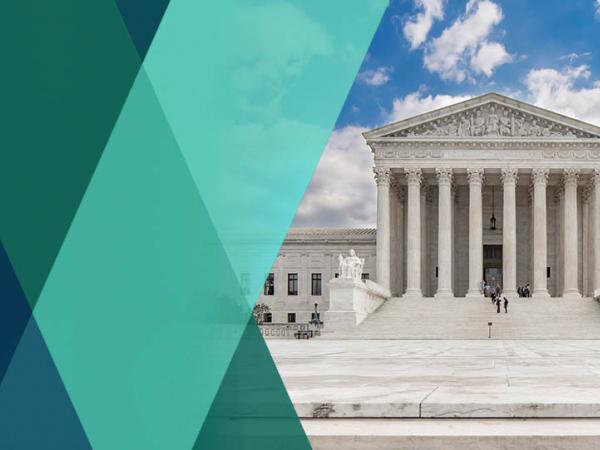
Health Care
Viewpoints
Filter by:
Potential Pitfalls of Telehealth Prescribing
May 31, 2022 | Blog | By Lara Compton, Ellen Janos, Cassandra Paolillo
As we’ve previously covered, while Congress has acted to extend certain COVID-era telehealth flexibilities (mostly related to Medicare coverage) beyond the Public Health Emergency (PHE), the future of prescribing controlled substances via telehealth is uncertain. Although the American Telemedicine Association and other industry groups continue to advocate for changes to allow telehealth providers to prescribe controlled substances in certain circumstances, without further action by Congress or the Drug Enforcement Administration (DEA), telehealth providers who prescribe controlled substances will need to conduct an in-person examination of the patient once the PHE ends.
New York Establishes First Pharmacy Benefits Bureau in the Nation as Registration and Annual Reporting Deadlines for Pharmacy Benefit Managers Approach
May 25, 2022 | Blog | By Tara E. Dwyer, Cody Keetch, Jean D. Mancheno
On May 11, 2022, New York Governor Kathy Hochul announced the creation of the Department of Financial Services’ Pharmacy Benefits Bureau. Governor Hochul noted that the Pharmacy Benefits Bureau is the first of its kind in the country. The Pharmacy Benefits Bureau will be tasked with implementing and overseeing new licensing and reporting requirements impacting Pharmacy Benefit Managers (PBMs) in New York. This blog post provides an analysis of the intended purpose of the Pharmacy Benefits Bureau and an overview of the new PBM guidance from the Department of Financial Services.
FDA Expresses Displeasure with Consumer Products Containing Trendy Cannabis Ingredient Delta-8 THC
May 13, 2022 | Blog | By Jane Haviland, Joanne Hawana
On May 4, 2022, the U.S. Food and Drug Administration (FDA) for the first time issued warning letters related to products containing delta-8 tetrahydrocannabinol (delta-8 THC). FDA has previously sent warning letters to other companies illegally selling unapproved and misbranded cannabidiol, or CBD, products that claimed to treat illness in violation of the Federal Food, Drug, and Cosmetic Act (FD&C Act), as we have discussed in prior posts (one example here). In a separate recent slew of CBD-related actions, it issued warning letters jointly with the Federal Trade Commission (FTC) to seven companies for selling CBD products with claims that they will treat or prevent COVID-19. This blog post will define delta-8 THC and analyze the FDA's warning letters.
CMS Moves Forward with its D-SNP Proposals in its CY 2023 Medicare Advantage and Part D Final Rule
May 10, 2022 | Blog | By Lauren Moldawer, Bridgette Keller
Continuing our series discussing the CY 2023 Medicare Advantage and Part D Final Rule (Final Rule), this post focuses on the D-SNP related provisions under the Final Rule. As we discussed, the Centers for Medicare & Medicaid Services (CMS) proposed significant modifications to its regulations governing Dual Eligible Special Needs Plans (D-SNPs). CMS finalized the majority of its proposals with limited modifications. This blog summarizes some of the key D-SNP provisions, focusing on the modifications from the proposed rule and CMS’ commentary that provides insight into CMS’ priorities and focus areas. Please refer to our prior post on D-SNPs for a more in-depth overview of the proposals.
FDA Cracks Down on Unauthorized and Counterfeit COVID-19 Diagnostic Tests
May 9, 2022 | Blog | By Benjamin Zegarelli
As the COVID-19 public health emergency drags into its third year, we continue to keep track of efforts by the Food and Drug Administration (FDA) to combat fraud in the form of fake cures, counterfeit diagnostic tests, and other products claiming to prevent, treat, or detect infection by SARS-CoV-2 that are marketed without required FDA authorization. Our previous posts provided updates on joint and separate efforts by FDA and the U.S. Federal Trade Commission (FTC) throughout the pandemic to detect and eliminate these illegal products. In this post, we focus on FDA’s recent enforcement activities concerning COVID-19 diagnostic tests and the agency’s increasingly aggressive pursuit of entities offering counterfeit or unauthorized tests.
OIG Issues Favorable Opinion on Federally Qualified Health Center’s Smartphone Loan Program
May 6, 2022 | Blog | By Rachel Yount, Jean D. Mancheno
On April 27, 2022, the Office of Inspector General (OIG) for the Department of Health and Human Services issued Advisory Opinion No. 22-08 (AO 22-08), which addresses an existing arrangement of a federally qualified health center (FQHC) (hereafter, Requestor) that loans limited-use smartphones to enable existing patients’ access to Requestor’s telehealth platform (the Arrangement). The Arrangement’s purpose is described as increasing access to telehealth services and combating isolation by allowing patients to talk and text with others, including during the COVID-19 public health emergency (PHE).
OIG Expresses Concern about Laboratory Specimen Collection Payments to Hospitals in AO 22-09
May 5, 2022 | Blog | By Karen Lovitch
Last week, the Office of Inspector General (OIG) for the Department of Health and Human Services (HHS) issued Advisory Opinion No. 22-09 (AO 22-09), which addresses a proposed arrangement pursuant to which the operator of a network of laboratories (the Requestor) would compensate hospitals for certain specimen collection services related to testing performed by Requestor (the Proposed Arrangement). The OIG ultimately concluded that the Proposed Arrangement poses a risk of fraud of abuse under the federal Anti-Kickback Statute (AKS). In this post, we will cover the OIG’s rationale for this decision, as well as some of the history of the OIG’s scrutiny of specimen collection arrangements.
Final Medicare Advantage and Part D Rule will Likely Require Medicare Advantage Plans to Update 2023 Bids under Maximum Out-of-Pocket (MOOP) Policy Changes
May 4, 2022 | Blog | By Bridgette Keller, Lauren Moldawer
The Centers for Medicare & Medicaid Services (CMS) released its Final Rule on Contract Year 2023 Policy and Technical Changes to the Medicare Advantage and Medicare Prescription Drug Benefit Programs (Final Rule) late last week. We summarized the major provisions of CY 2023 Proposed Rule in a blog series in January, noting that the proposals sought to increase consumer protections and reduce health disparities, with a strong emphasis on policies impacting individuals who are dually eligible for Medicare and Medicaid. This is the first blog post in our series on the Final Rule in which we discuss policy changes to the maximum out-of-pocket (MOOP) rules requiring that all cost-sharing, including cost sharing paid by secondary payors, be included in the calculations for MOOP.
OIG Says that Increasing Use of Biosimilars Could Reduce Part D Spending
May 2, 2022 | Blog | By Bridgette Keller
Last month, the Office of Inspector General for the Department of Health and Human Services (OIG) issued a report finding that Medicare Part D, and Medicare beneficiaries, could reduce spending with increased use of biosimilars. Specifically, OIG recommends that the Centers for Medicare & Medicaid Services (CMS) (1) encourage Part D plan sponsors to increase access to and use of biosimilars, and (2) monitor biosimilar formulary coverage to identify concerning trends. This blog unpacks the OIG’s report.
Health Care Organizations Warned of Aggressive Ransomware Threat
April 28, 2022 | Blog | By Cynthia Larose
Ransomware is the “business pandemic.” Warnings have been issued by multiple agencies around the world to alert businesses to increase their protection and awareness. Most recently, the Department of Health and Human Services (HHS) has issued a warning to health care organizations related to what it calls “an exceptionally aggressive” ransomware group known as Hive.
OIG Approves Physician-Owned Medical Device Company
April 28, 2022 | Blog | By Rachel Yount
On April 25, 2022, the Office of Inspector General (OIG) for the Department of Health and Human Services (HHS) issued a favorable Advisory Opinion regarding a medical device company (Company) in which physicians who order the Company’s products hold a majority ownership interest. The Company manufactures medical device products that may be ordered by the physician owners and a physician spouse of one of the physician owners. This blog post analyses the Advisory Opinion and recommends risk-mitigation strategies for PODs and other health care entities with physician ownership, particularly entities where physician-owners are a considerable source of revenue.
DOJ Announces Another Wide-Ranging COVID-19 Fraud Enforcement Action
April 28, 2022 | Blog | By Samantha Kingsbury
Last week, the Department of Justice (DOJ) announced another significant takedown that it described as “build[ing] on the success of the May 2021 COVID-19 Enforcement Action.” As part of this enforcement effort, criminal charges were announced against 21 defendants across the country for their alleged involvement in various COVID-19 related fraud schemes that resulted in over $149 million in “COVID-19 related false billings to federal programs and theft from federally-funded pandemic assistance programs.”
Medicaid Best Price 101: A Review of Medicaid Best Price Policy and New CMS Guidance on Medicaid Best Price Reporting for Value Based Purchasing Arrangements
April 26, 2022 | Blog | By Lauren Moldawer, Stephnie John
At the end of March 2022, the Centers for Medicare & Medicaid Services (CMS) released guidance to drug manufacturers and states on reporting Medicaid Best Price under value based purchasing (VBP) arrangements (Medicaid Best Price Guidance or Guidance). This Guidance follows CMS’ final rule issued on December 31, 2020 (Final Rule) responding to criticism that Medicaid Best Price requirements are hindering the use of VBP arrangements. The Final Rule and Guidance will go into effect on July 1, 2022, allowing manufacturers to report multiple best prices for VBP arrangements so long as the manufacturer offers the VBP arrangement to state Medicaid programs. This blog post will begin with a “101” on the Medicaid Best Price Policy, and then delve into an overview of the Final Rule, including the surrounding criticism from stakeholders; summarize the Medicaid Best Price Guidance; and discuss the potential impact of this change on states and manufacturers
With Proposal to Cap Drug Price Increases, Massachusetts Once Again Takes Center Stage in the Drug Pricing Debate
April 22, 2022 | Blog | By Xavier Hardy
On March 17, the same day we wrote about proposed legislation in Connecticut to cap drug price increases, Governor Charlie Baker of Massachusetts included a similar proposal in his proposed budget. Similar to the Connecticut legislation, the Massachusetts bill (S. 2774) would penalize manufacturers for increasing the price of any medication above its reference price, adjusted for inflation using the Consumer Price Index, plus 2%. Manufacturers that exceed this threshold would have to pay a penalty equal to 80% of the amount above the excessive price increase threshold – meaning the manufacturer would essentially only collect 20% of the revenue for a drug above the price cap. Like the Connecticut bill, the reference price is based on a drug’s Wholesale Acquisition Cost (WAC), which is essentially the list price set by manufacturers for a prescription drug before any negotiations or discounting. This article addresses the implications if S.2774 were to become law.
OIG Approves Manufacturer’s Offer of Free Genetic Testing
April 14, 2022 | Blog | By Karen Lovitch, Theresa Carnegie, Pat Ouellette
The Office of Inspector General for the Department of Health and Human Services (OIG) recently published an Advisory Opinion in which it concluded that the provision of free genetic testing and counseling services by a pharmaceutical manufacturer would not result in the imposition of sanctions under the federal Anti-Kickback Statute (AKS) and the beneficiary inducements civil monetary penalty provision (Beneficiary Inducements CMP). This Advisory Opinion is the first to address this type of arrangement and thus provides useful insight for the health care and life sciences industries.
OCR RFI: Have You Implemented Your Recognized Security Practices?
April 13, 2022 | Blog | By Pat Ouellette
The Office for Civil Rights (OCR) of the U.S. Department of Health and Human Services (HHS) released a Request for Information (RFI) to obtain industry feedback and inform potential future rulemaking regarding information security practices and civil money penalties (CMPs) under the Health Information Technology for Economic and Clinical Health (HITECH) Act and the HIPAA Security Rule. OCR is seeking input on how HIPAA covered entities and business associates are operationalizing “recognized security practices” as defined by Public Law 116-321. It is also requesting commentary on the methodologies used to disperse CMPs to individuals harmed by violations of certain privacy or security provisions of the HITECH Act or the Social Security Act, which we will cover in a separate post.
HRSA Demands Repayment from Providers that Failed to Comply with Provider Relief Fund Reporting Requirements
April 11, 2022 | Blog | By Jean D. Mancheno
Under the Coronavirus Aid, Relief, and Economic Security Act (CARES Act), the Health Resources and Services Administration (HRSA) of the Department of Health and Human Services (HHS) is authorized to distribute funds from its Provider Relief Fund (PRF) to certain providers. These providers can then use the funds to support COVID-19 prevention, preparedness, and response, or to alleviate loss of patient care revenue. However, HRSA requires that providers receiving PRF funds comply with certain requirements, including post-payment reporting requirements. HRSA is now notifying providers that failed to comply with the reporting requirements that they must return the PRF funds they received.
PBM Regulatory Roundup (Spring 2022): The 8th Circuit Rules and More States Issue Regulations
March 29, 2022 | Blog | By Hassan Shaikh, Bridgette Keller
As states move forward with their 2022 legislative sessions in earnest, we have been examining whether the Wehbi decision has had any initial effects on PBM-focused legislation. This roundup provides a brief recap of the significance of Wehbi, summarizes the Eighth Circuit’s opinion and holding, and highlights some state measures that have been proposed or passed during the flurry of PBM-focused legislation we have already seen in 2022.
Federal Healthcare Agencies Aim to Prioritize Information Blocking Enforcement in 2022
March 28, 2022 | Blog | By Pat Ouellette
The United States Department of Health and Human Services (HHS) and Centers for Medicare and Medicaid Services (CMS) leadership announced during last week’s HIMSS 2022 Conference that the agencies will be focusing on information blocking enforcement for the remainder of 2022. This blog post discusses the importance of closing the enforcement gap and the development of disincentives for health care providers.
Dr. Lorna Breen Health Care Provider Protection Act Enacted To Address Mental Health and Substance Use Disorders Amongst Health Care Providers
March 25, 2022 | Blog | By Jean D. Mancheno
On March 18, 2022, President Biden signed the Dr. Lorna Breen Health Care Provider Protection Act (Act) into law. The Act is named for Dr. Lorna Breen, who served as the Medical Director of New York-Presbyterian Allen Hospital. Dr. Breen died by suicide in April 2020, as the COVID-19 pandemic was taking hold of the nation and, in particular, New York City. Since Dr. Breen’s passing, her family has established the Dr. Lorna Breen Heroes’ Foundation (Heroes’ Foundation). The Heroes' Foundation’s mission is to reduce burnout, safeguard the well-being of health care providers (HCPs), and reduce the stigma surrounding HCPs seeking help or treatment. The Act is a crucial step in achieving this mission.
Explore Other Viewpoints:
- Data Centers & Digital Infrastructure
- AI: The Washington Report
- Antitrust
- Appellate
- Arbitration, Mediation & Alternate Dispute Resolution
- Artificial Intelligence
- Awards
- Bankruptcy & Restructuring
- California Land Use
- Cannabis
- Class Action
- Complex Commercial Litigation
- Construction
- Consumer Product Safety
- Corporate Governance (ESG)
- Cross-Border Asset Recovery
- DEI Legal Developments
- Debt Financing
- Direct Investing (M&A)
- Diversity
- EB-5 Financing
- Education & Nonprofits
- Employment
- EnforceMintz
- Environmental (ESG)
- Environmental Enforcement Defense
- Environmental Law
- Environmental, Social, and Corporate Governance (ESG)
- FDA Regulatory
- False Claims Act
- Federal Circuit Appeals
- Financial Institution Litigation
- Government Law
- Growth Equity
- Health Care
- Health Care Compliance, Fraud and Abuse, & Regulatory Counseling
- Health Care Enforcement & Investigations
- Health Care Transactions
- Health Information Privacy & Security
- IP Due Diligence
- IPRs & Other Post Grant Proceedings
- Immigration
- Impacts of a New US Administration
- Insolvency & Creditor Rights Litigation
- Institutional Investor Class Action Recovery
- Insurance & Financial Services
- Insurance Consulting & Risk Management
- Insurance and Reinsurance Problem-Solving & Dispute Resolution
- Intellectual Property
- Investment Funds
- Israel
- Licensing & Technology Transactions
- Life Sciences
- Litigation & Investigations
- M&A Litigation
- ML Strategies
- Medicare, Medicaid and Commercial Coverage & Reimbursement
- Mergers & Acquisitions
- Patent Litigation
- Patent Prosecution & Strategic Counseling
- Pharmacy Benefits and PBM Contracting
- Portfolio Companies
- Privacy & Cybersecurity
- Private Client
- Private Equity
- Pro Bono
- Probate & Fiduciary Litigation
- Products Liability & Complex Tort
- Projects & Infrastructure
- Public Finance
- Real Estate Litigation
- Real Estate Transactions
- Real Estate, Construction & Infrastructure
- Retail & Consumer Products
- Securities & Capital Markets
- Securities Litigation
- Social (ESG)
- Special Purpose Acquisition Company (SPACs)
- Sports & Entertainment
- State Attorneys General
- Strategic IP Monetization & Licensing
- Sustainable Energy & Infrastructure
- Tax
- Technology
- Technology, Communications & Media
- Technology, Communications & Media Litigation
- Trade Secrets
- Trademark & Copyright
- Trademark Litigation
- Unified Patent Court (UPC)
- Value-Based Care
- Venture Capital & Emerging Companies
- White Collar Defense & Government Investigations
- Women's Health and Technology










